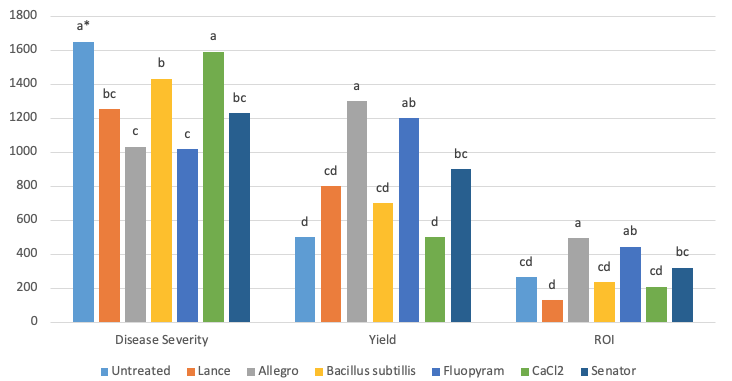White mold is an important disease in Ontario dry beans. Growers frequently use foliar fungicides to manage white mold. The purpose of this study was to measure product performance and return on investment, to help growers to select the best fungicide.
Five small plot experiments were conducted at the Huron Research Station near Exeter Ontario in 2009- 2011. Lush plant growth was promoted using high seeding rates and nitrogen fertilizer rates. Disease development was encouraged by seeding white mold sclerotia and using overhead irrigation. Six fungicides were compared to an untreated control treatment. Disease severity was measured as an index, with higher values equal to higher disease. Seed yield (kg/ha) was adjusted to 18% moisture and return on investment ($/ha) accounted for fungicide and application costs, but considered all other costs were the same between treatments.

* Bars within a group (location and year) with the same letter are not significantly different (P<0.05).
1AUDPC = disease ratings over time is graphed, and the area of the disease curve is measured to estimate the disease progress. Higher values have greater disease severity ratings.
Lance had lower disease and higher yield than the untreated control (Figure 1), but had a lower ROI, due to the relatively high cost of the product. Allegro had very low disease severity, the highest yield and the highest ROI of any treatment. Fluopyram is a promising new active from Bayer CropScience, with similar results as Allegro. The biological B. subtillis and the alternative product calcium chloride (CaCl2) had poor performance, and were similar to the untreated control. Senator gave moderate results, but was weaker than Allegro, which was the top treatment.
Originally published in Canadian Journal of Plant Science 2014. Volume 94. Pages 1-6. Revised July 2020 for drybeanagronomy.ca.
